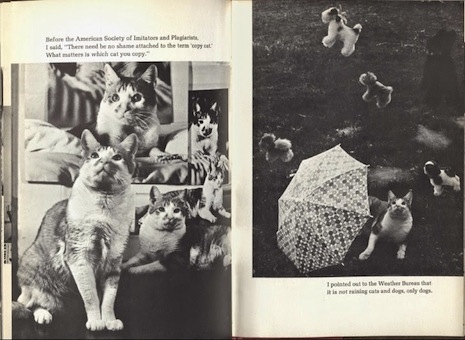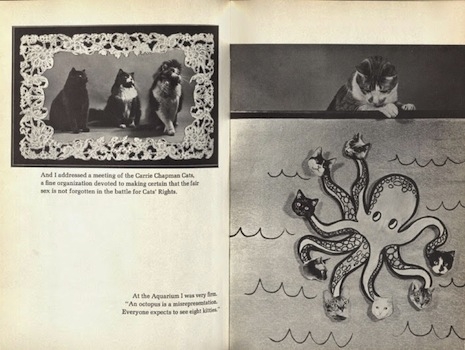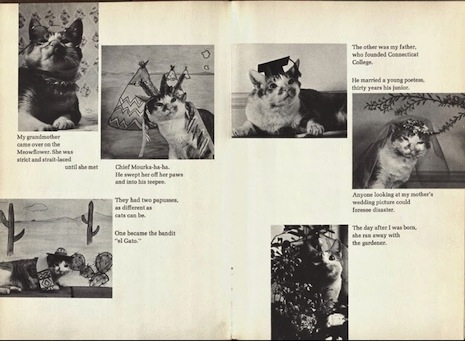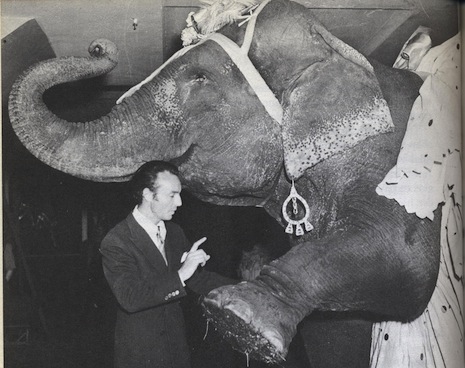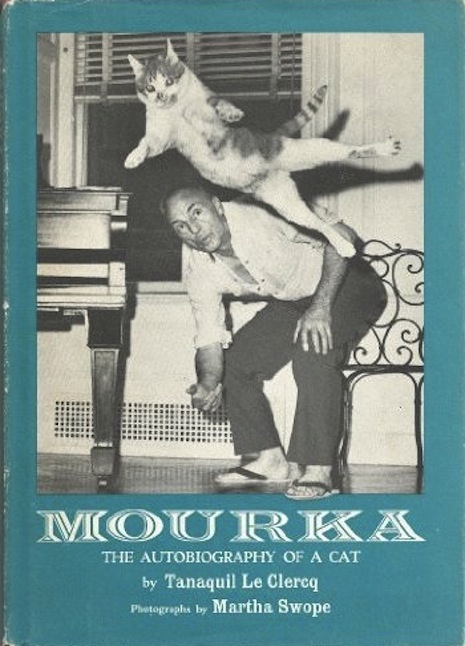
As the 1964 book Mourka: Autobiography of a Cat amply demonstrates, cats did not need the Internet to become nationwide sensations; they have been, er, catnip to content providers for decades.

Mourka was an “alley cat” who belonged to the legendary choreographer George Balanchine. A picture of Balanchine “training” Mourka appeared in LIFE magazine, and the picture proved so popular that a book deal was quickly inked. The author, Tanaquil Le Clerq, was Balanchine’s wife, and the photographer was Martha Swope. This text is from the dust cover of the book:
Mourka, an extraordinary alley cat is one of famed choreographer George Balanchine’s prize pupils. He has learned to do entre-chats, pas de chats, and even a grand jeté. When photographer Martha Swope caught Mourka doing one of his spectacular leaps, Life printed the memorable photo and Mourka’s reputation was made instantly for millions of Americans. Here, Miss Swope’s pictures and Miss Le Clerq’s text convey his many exploits and suggest that Mourka may well be the most accomplished feline in the world. [This, of course, was written decades before the advent of Maru.]
Mourka, a native New Yorker, shares a large apartment on the upper West Side with Mr. and Mrs. Balanchine. He spends his summers in Weston, Connecticut, where he indulges in his favorite hobby, bug-watching, and such favorite foods as asparagus, potatoes, peas, and sour cream.
Ballerina Tanaquil Le Clerq, the wife of George Balanchine, was born in Paris and brought to this country at an early age. She won a scholarship to the School of American Ballet at the age of eleven and later danced many leading roles with the New York City Ballet. In 1956, while on a dance tour of Europe, she was stricken with polio which halted her dancing career. Now that Mourka is published, she is at work on her next book, a gourmet cook book to be published by Stein and Day in 1965.

Balanchine training Mourka
Balanchine put in considerable time “training” Mourka, and on the occasion when Mourka was obliged to present a command performance for the composer Igor Stravinsky, it was the only time that a ballet performance ever gave Balanchine butterflies. According to Balanchine: A Biography by Bernard Taper:
While [Balanchine] was away, a friend or Tanaquil’s mother stayed with her, or she often chose to remain alone in the apartment, kept company by Mourka, their white-and-ginger-colored cat, a pampered and much admired creature. Balanchine had trained this cat to perform brilliant jetés and tours en l’air; he used to say that at last he had a body worth choreographing for. He talked of presenting Mourka publicly, in a program titled—in parody of the revolutionary program he had presented as a youth in Russia—“The Evolution of Ballet: From Petipa to Petipaw.” Once, at a party at his apartment during the Christmas season, Stravinsky asked to see Mourka perform. Guests present later said that was the only time they had ever seen Balanchine nervous before a performance.







